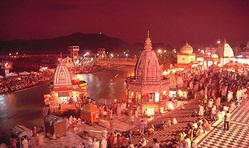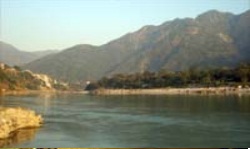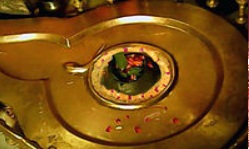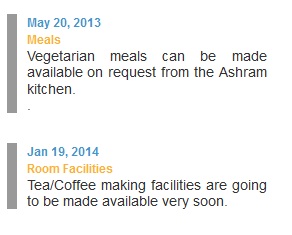![]()
![]()
![]()
Send Mail directly to book your required Room.

Har Ki Pauri is a famous ghat on the banks of the Ganges in Haridwar in Uttarakhand state in India. This revered place is the major landmark of the holy city of Haridwar. Literally, "Har" means "Lord Shiva" who is the god according to shaivite school of Hindu theology, "ki" means "of" and "pauri" means "steps". Lord Shiva and Lord Vishnu are believed to have visited the Brahmakund in Har ki Paudi in the Vedic times. There is a large footprint said to belong to Lord Vishnu on a stone wall.[1]It is believed that it is precise spot where the Ganges leaves the mountains and enters the plains. The ghat is on the west bank of Ganges canal through which the Ganges is diverted just to the north. Har ki pauri is also the area where thousands of pilgrims converge and the festivities commence during the Kumbha Mela, which takes place every twelve years, and the Ardh Kumbh Mela, which takes place every six years and the Punjabi festival of Vaisakhi,a harvest festival occurring every year in the month of April .

The Ganges is a trans-boundary river of India and Bangladesh. The 2,525 km (1,569 mi) river rises in the western Himalayas in the Indian state of Uttarakhand, and flows south and east through the Gangetic Plain of North India into Bangladesh, where it empties into the Bay of Bengal. It is the third largest river in the World by discharge.The Ganges is the most sacred river to Hindus[4] and is also a lifeline to millions of Indians who live along its course and depend on it for their daily needs.[5] It is worshipped as the goddess Ganga in Hinduism.[6] It has also been important historically: many former provincial or imperial capitals (such as Patliputra,[7] Kannauj,[7] Kara, Kashi, Allahabad, Murshidabad, Munger, Baharampur, Kampilya and Kolkata) have been located on its banks.

As mentioned in the Mahabharata and other texts of Hinduism, King Daksha Prajapati, the father of Sati, Shiva's first wife, performed Yagna at the place where the temple is situated. Although Sati felt insulted when her father did not invited Shiva to the ritual, she attended the yagna. She found that Shiva was being spurned by her father and she burnt herself in the Yajna Kunda itself. Shiva got angry and sended his Gaṇas, the terrible demi-god Vīrabhadra and Bhadrakali to the ritual.[2] On the direction of Shiva, Virabhadra appeared with Shiva's ganas in the midst of Daksha's assembly like a storm wind and waged a fierce war with the gods and mortals present culminating in the beheading of Daksha, who was later given the head of a goat at the behest of Brahma and other gods. Much of the details of the Ashvamedha Yagna (Horse Sacrifice) of Daksha are found in the Vayu Purana.




